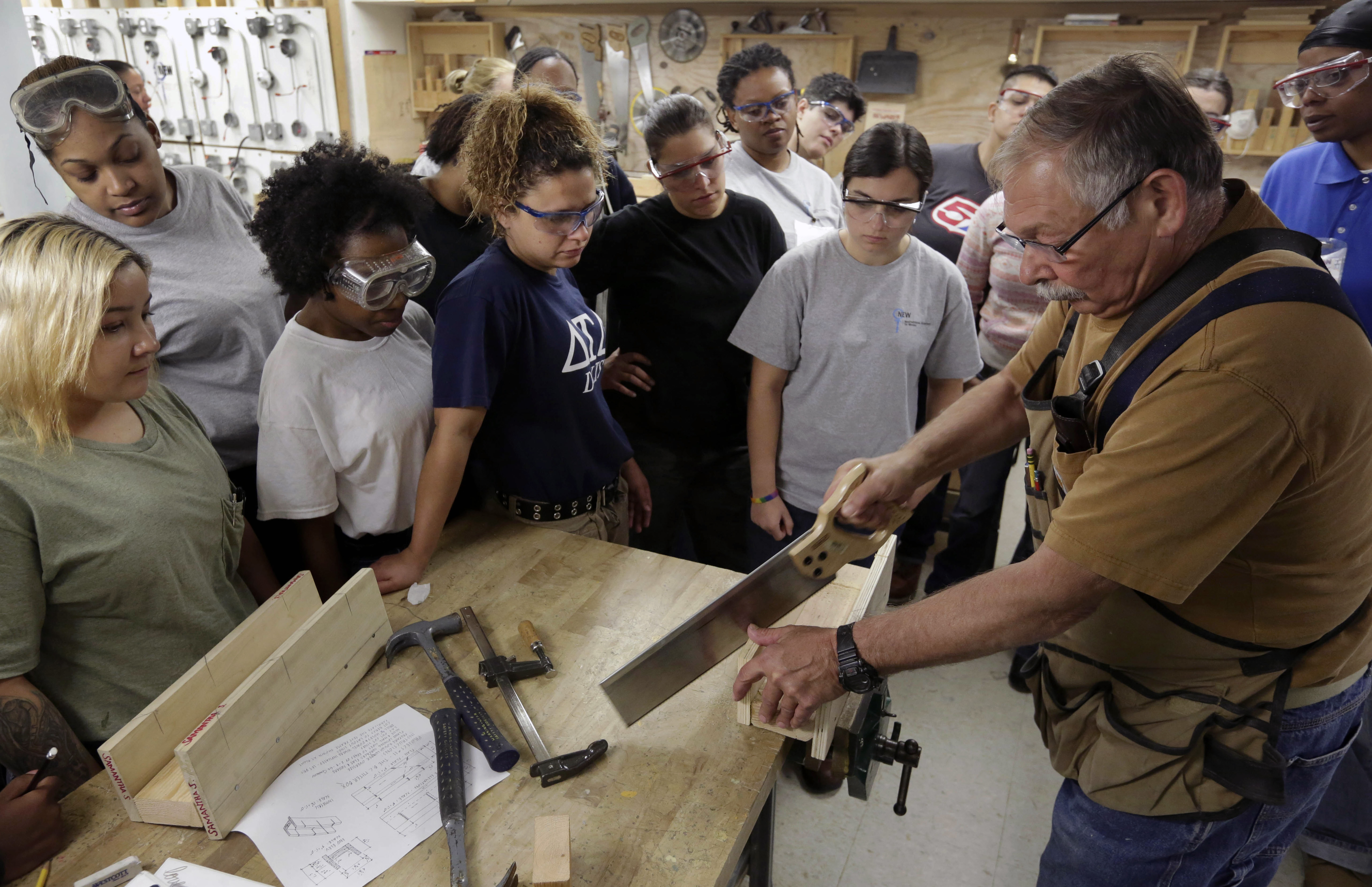
Efforts to accomplish those goals are more advanced in New York than in many parts of the country, with pledges by unions, employers and city officials to boost women’s share of construction jobs. One key player is Nontraditional Employment for Women, a nonprofit which for three decades has been offering training programs such as the one taken by Janice Moreno.
Known as NEW, the organization has arrangements with several unions to take women directly into their multiyear apprenticeships — at a starting wage of around $17, plus benefits — once they complete the training. After four or five years, they can attain journeyman status, with hourly pay of $40 or more.
Kathleen Culhane, NEW’s interim president, said more than 1,000 graduates of the program have obtained apprenticeships since 2005, and women now comprise 12 to 15 percent of the apprentices with leading laborers’ and carpenters’ unions in the city.
Thanks to support from foundations, employers and government contracts, NEW covers all costs for the women taking its programs, including transit fares to and from the headquarters in Manhattan. Students must have high school or GED diplomas and be able to carry 50-pound loads.
On a recent class day, Moreno and about 20 other students were learning carpentry techniques from 67-year-old Howie Rotz, who’s been teaching since retiring eight years ago from a carpentry career.
“Women have a good work ethic,” he said. “They’re very serious.”
Another instructor, Kathleen Klohe, worked as a roofer and a unionized carpenter before joining NEW after the recession hit in 2008.
“Did I come across sex discrimination? Once or twice,” she said. “A few times, I got the sense that I was not wanted, but I kept on. I knew what I was doing.”
She encourages her students’ interest in construction, while advising that it requires “a certain mental strength.”
Beyond learning job skills, NEW students do role-playing to get ready for challenges in dealing with future co-workers. Among the topics, Moreno said, is how to distinguish between flagrant sexual harassment that should be reported, as opposed to less egregious behavior that perhaps should be endured.
“They want us to be prepared for the possibility we won’t be liked, or we’ll be the only woman on the job,” Moreno said. “If you complain too quickly, your job can be at risk.”
One of NEW’s union partners is Laborers Local 79. Its business manager, Mike Prohaska, said the local had about 220 women at last count — 3.1 percent of the roughly 7,000 active members. Of its current apprentices, about 12 percent are women.
“The women by and large are very well accepted,” Prohaska said. “To survive, they have to toe the line… As long as they’re real workers, nobody minds having them.”